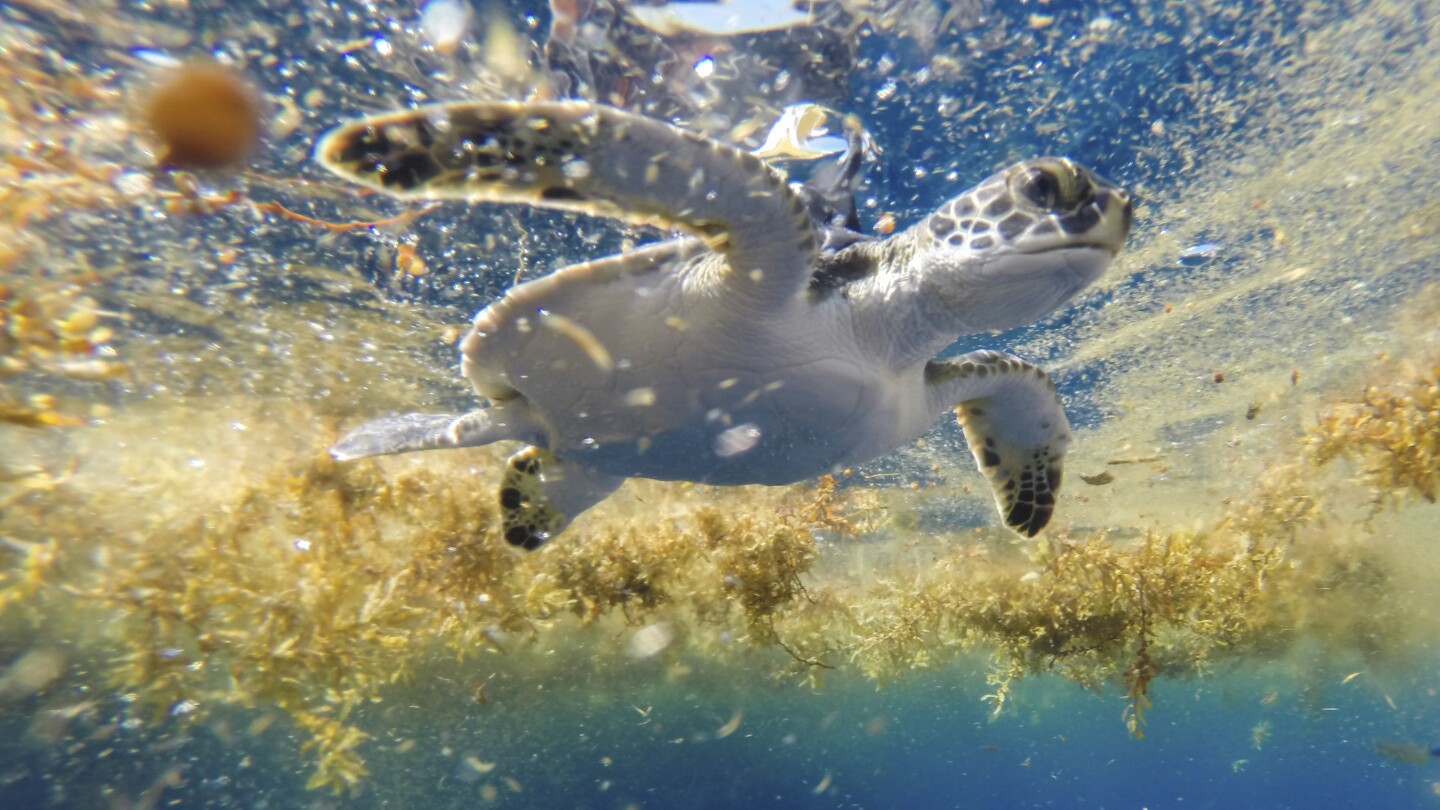Science
Scientists solve the mystery of sea turtles’ ‘lost years’

Unveiling the Secret Life of Young Sea Turtles: A Breakthrough in Marine Science
The Mystery of the "Lost Years"
For decades, marine scientists have been puzzling over a critical period in the life cycle of sea turtles. Known as the "lost years," this phase begins when tiny hatchlings emerge from their nests on the beach and ends when they return to coastal waters as nearly grown turtles, a journey that can take anywhere from one to ten years. During this time, little was known about where these young turtles go, what they do, or how they survive in the vast ocean. Kate Mansfield, a marine scientist at the University of Central Florida, describes this gap in knowledge as "a mystery" that has long hindered conservation efforts for these endangered species. Now, thanks to a groundbreaking study, scientists are finally beginning to fill in these missing pieces.
Tracking the Turtles: A Decade of Research
The breakthrough came after more than a decade of meticulous research. Mansfield and her team attached GPS tags to the shells of 114 young turtles in the Gulf of Mexico, including endangered species like green turtles, loggerheads, hawksbills, and Kemp’s ridleys. These small but advanced tracking devices were designed to stay on the turtles’ shells long enough to transmit valuable data before they naturally shed as the turtles grow. The team spent countless hours in small boats, searching for the tiny creatures drifting among algae in the Gulf, to ensure the tags were securely placed. Katrina Phillips, a marine ecologist and co-author of the study, explained that each tag provided a few weeks to a few months of location data, which was enough to challenge long-held assumptions about these young turtles.
Debunking the Myth of Passive Drifters
For years, scientists believed that young sea turtles were passive drifters, carried by ocean currents without much control over their direction. However, the GPS data revealed a surprising truth: these tiny creatures are not just going with the flow—they are actively swimming. To confirm this, researchers compared the turtles’ movements with those of drifting buoys placed in the water at the same time. While more than half of the buoys washed ashore, the turtles avoided this fate, indicating that they were making deliberate choices about their paths. Nathan Putman, an ecologist at LGL Ecological Research Associates in Texas and a co-author of the study, noted that the turtles “are actually swimming” and navigating their environment in ways that were previously underestimated. Bryan Wallace, a wildlife ecologist at Ecolibrium in Colorado, added, “This tiny little hatchling is making its own decisions about where it wants to go and what it wants to avoid.”
A New Perspective on Turtle Migration
The tracking data not only revealed that young turtles are active swimmers but also showed that their movements are more varied and complex than scientists had imagined. The turtles were found to move between continental shelf waters and the open ocean, adapting to their surroundings in ways that suggest a level of awareness and purpose. This challenges the earlier belief that they were simply at the mercy of currents. The Gulf of Mexico, where the study was conducted, proved to be a critical habitat for these young turtles, serving as a vital stopping point for four endangered species. The findings provide a clearer picture of how these animals use this region, which is essential for developing effective conservation strategies.
Overcoming the Challenges of Tracking Turtles
Achieving these insights was no small feat. The development of flexible, solar-powered GPS tags capable of staying on the turtles’ shells long enough to transmit data was a major technical challenge. For years, the technology lagged behind the vision of the researchers. Jeffrey Seminoff, a marine biologist at NOAA who was not involved in the study, remarked, “For years, the technology couldn’t match the dream.” The tags had to be lightweight, durable, and designed to accommodate the rapid growth of the turtles, whose shells shed as they grow. The success of this study is a testament to the persistence and ingenuity of the scientists involved.
Conservation Implications and the Future of Sea Turtle Research
The study’s findings are not just a scientific breakthrough but also a significant step forward for sea turtle conservation. By understanding how young turtles use the Gulf of Mexico and other critical habitats, researchers can better identify areas that need protection and develop strategies to reduce threats such as pollution, fishing gear, and climate change. Jeanette Wyneken of Florida Atlantic University, who was not involved in the research, summed it up perfectly: “It’s not that the sea turtles were ever lost, but that we had lost track of them.” Now, with this new data, scientists have a clearer path to ensuring the survival of these iconic creatures. The study serves as a reminder of the importance of continued research and innovation in understanding and protecting marine life.
-

 Money3 days ago
Money3 days agoConsumer Financial Protection Bureau Adds Error Message To Home Page
-

 Australia20 hours ago
Australia20 hours agoTropical Cyclone Zelia intensifies to category 2 storm
-

 Asia21 hours ago
Asia21 hours agoWhat you need to know about 2024 YR4, the asteroid that could hit Earth in about eight years’ time
-

 Entertainment12 hours ago
Entertainment12 hours agoPrince Harry and Meghan Markle’s Best Moments and Photos From the 2025 Invictus Games
-

 Money2 days ago
Money2 days agoWinning Content Strategies For Wealth Managers
-

 Politics21 hours ago
Politics21 hours agoDozens of religious groups sue to stop Trump admin from arresting migrants in places of worship
-

 Entertainment3 days ago
Entertainment3 days agoEvery Celebrity Who Attended the 2025 Super Bowl: A Guide to the A-Listers at the Big Game
-

 United States2 days ago
United States2 days agoJudge extends restraining order to ban Trump admin buyout offer to federal workers











